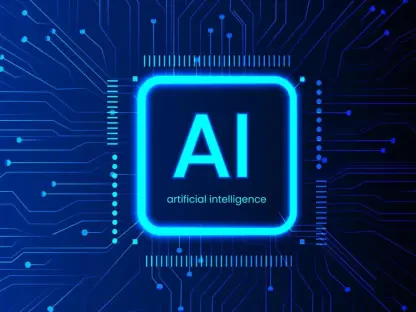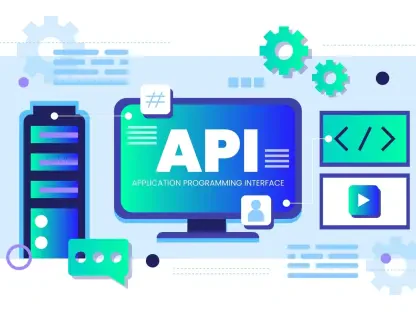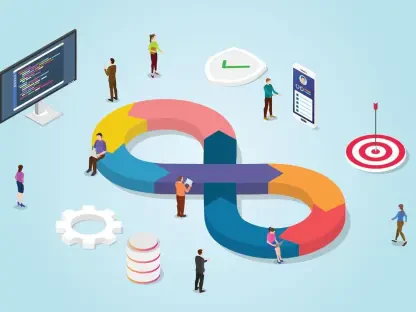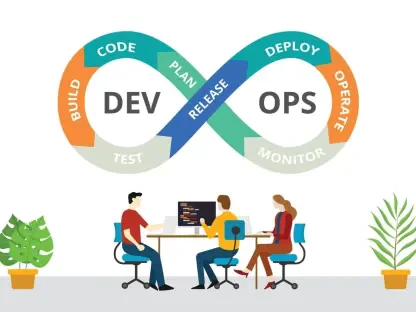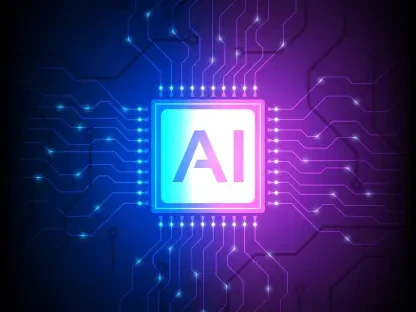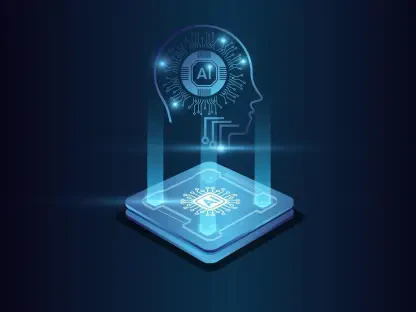In the rapidly evolving digital landscape, businesses are constantly seeking innovative solutions to meet growing demands for speed, scalability, and omnichannel content delivery. Traditional Content Management Systems (CMS) like WordPress, Drupal, and Joomla have long been the go-to platforms for web development. However, as digital needs become more complex, these monolithic systems are showing their limitations. Enter Headless CMS, a revolutionary approach that decouples the front end from the back end, offering unprecedented flexibility and performance.
Understanding the Limitations of Traditional CMS
The Monolithic Architecture Challenge
Traditional CMS platforms are built on a tightly coupled architecture where the front end and back end are interdependent. This setup simplifies initial development but creates significant challenges as businesses scale. Updating content across multiple digital channels becomes cumbersome, leading to inconsistencies and delays. The templated nature of these platforms also restricts creative freedom, making it difficult for brands to deliver next-generation web experiences.
For example, when a business wants to update information on its website or app, changes need to be made on the server that houses the CMS. This process is not only time-consuming but also labor-intensive, making it challenging to keep up with the fast-paced digital world. Moreover, these platforms are heavily dependent on plugins and extensions to add functionality, which can lead to security vulnerabilities and integration problems. Over time, the maintenance of these plugins can become a daunting task, especially as they become outdated or unsupported.
Security and Maintenance Issues
Another major drawback of traditional CMS platforms is their reliance on third-party plugins and extensions. While these plugins extend functionality, they often become unaffiliated and unregulated over time, posing security risks and integration problems. Maintaining these plugins can be a daunting task, especially for businesses with extensive digital footprints. As companies expand, these limitations hinder efficient content management and delivery, making it clear that a new approach is needed.
A primary concern is the risk posed by outdated or unsupported plugins, which can become significant points of vulnerability within the system. Hackers often exploit these weaknesses, leading to potential breaches that can compromise sensitive data and disrupt business operations. Additionally, traditional CMS platforms require constant updates and patches to stay secure, a task that can become overwhelming as the number of integrated plugins increases. This not only burdens IT teams but also diverts resources away from strategic initiatives that drive business growth.
The Emergence of Headless CMS
Decoupling Front End and Back End
Headless CMS addresses the limitations of traditional platforms by decoupling the front end from the back end. This architecture allows businesses to manage content in a central repository and deliver it dynamically across various digital touchpoints. By separating content creation from presentation, Headless CMS provides greater flexibility and scalability, enabling businesses to meet the demands of a growing customer base and an ever-evolving digital landscape.
The independence between front-end and back-end systems means that developers can utilize any front-end technology, allowing for more creative and flexible design implementations. For example, a company can use React for its web application, Swift for its iOS app, and Kotlin for its Android app while maintaining a single back-end content source. This not only streamlines the content management process but also allows for faster updates and a more cohesive user experience across all platforms.
Advantages of a Decoupled Architecture
The decoupled nature of Headless CMS offers several key advantages. Firstly, it reduces front-end restrictions, allowing for faster content delivery and more stable performance across channels. Secondly, it enhances scalability by focusing solely on content management, enabling businesses to create content once and distribute it seamlessly across multiple channels. This approach is crucial for international companies managing diverse languages and compliance requirements.
For instance, an international brand can use a Headless CMS to manage its content in multiple languages while complying with regional regulations and standards. This centralized approach ensures consistent and accurate information is displayed across all regions, enhancing the brand’s reliability and customer trust. Furthermore, the reduced dependency on third-party plugins improves security and minimizes the risk of maintenance issues, allowing businesses to focus on growth and innovation without worrying about technical setbacks.
How Headless CMS Enables Scalability
Centralized Content Repository
For businesses, particularly in e-commerce, scalability is vital for expanding their offerings across multiple sales avenues and devices. A Headless CMS provides a centralized content repository and API-based rendering, making it easier to adjust content for different devices or interfaces, even those that may not yet exist. This flexibility is essential for international companies managing diverse languages and compliance requirements.
Using a centralized content repository allows businesses to maintain a single source of truth, ensuring consistency and accuracy across all platforms. This centralization is particularly useful for e-commerce companies that need to update product information, prices, and availability swiftly across multiple sales channels. By using APIs to fetch and display content, businesses can dynamically adapt their digital presence to new devices and interfaces without having to restructure their content management system.
Cloud-Based Infrastructure
The cloud-based nature of Headless CMS ensures that businesses can handle enterprise-level traffic, AI-managed personalization, and large-scale digital experiences without compromising speed and efficiency. As businesses grow and the next generation of web development emerges, a Headless CMS offers the adaptability needed to stay relevant and efficient.
Cloud infrastructure enables businesses to scale their operations seamlessly, accommodating spikes in traffic during peak times without experiencing downtime. Moreover, cloud-based solutions often come with advanced security measures and regular updates, further enhancing the reliability and safety of the CMS. This infrastructure is particularly advantageous for companies looking to leverage machine learning and AI to personalize user experiences dynamically. With a Headless CMS, integrating these advanced technologies becomes more straightforward and efficient, laying the groundwork for innovative customer engagement strategies.
Faster Performance and Optimized User Experience
Streamlined Architecture
Website speed and performance significantly impact user engagement, SEO, and conversion rates. Traditional CMS platforms, with their monolithic architecture and reliance on third-party plugins, often suffer from slow website speed. A Headless CMS, on the other hand, uses a streamlined architecture with faster API content delivery and reduced backend processing, resulting in better website performance.
This streamlined approach means that content is served directly to the user without the need for intensive backend processing. Instead of loading entire pages, which can be time-consuming and resource-intensive, a Headless CMS delivers content through APIs, allowing front-end frameworks to quickly render the information. This method not only enhances speed but also improves the overall user experience, leading to higher engagement and satisfaction.
Improved Load Times
In a traditional CMS setup, loading a webpage involves calling up the database, assembling information, and loading various scripts, leading to latency and slow page rendering. In contrast, a Headless CMS sends content via APIs, improving load times, caching, and rendering across devices. This efficiency is particularly beneficial for intensive engagement sites like e-commerce platforms, media publications, and SaaS products, leading to increased interaction and decreased bounce rates.
Faster load times are crucial for maintaining user engagement and reducing bounce rates. Studies have shown that even a one-second delay can significantly impact user satisfaction and conversion rates. By leveraging the efficiency of Headless CMS, businesses can ensure that their digital platforms are responsive and provide a smooth user experience across all devices. This is particularly important for e-commerce sites, where quick load times can directly affect sales and customer retention.
Enabling Omnichannel Content Distribution
Seamless Content Experience
In today’s cross-device digital environment, brands must ensure a seamless and consistent content experience across all touchpoints. Consumers interact with brands through various channels, including websites, branded smartphone apps, voice-assisted apps, digital kiosks, wearable technology apps, and augmented reality. A Headless CMS enables brands to create content once and automatically distribute it across all these channels, ensuring a uniform user experience.
This ability to deliver consistent content across diverse platforms is invaluable for maintaining a cohesive brand image. For example, a retailer can update content such as product descriptions, prices, and promotions from a single interface, ensuring that all platforms reflect these updates instantly. Whether a customer is browsing on a website, using a mobile app, or interacting with a voice assistant, they receive the same accurate and up-to-date information, enhancing their overall experience with the brand.
Centralized Updates
For instance, a retailer can update product descriptions, prices, and discounts from one central location, and these changes will reflect instantly across the website, mobile application, and partner marketplaces. Similarly, a newspaper can push news articles to its website, social media pages, and podcasting apps through APIs, maintaining consistency across all platforms. This approach eliminates redundancy, enhances brand uniformity, and simplifies content management.
This centralized system not only streamlines the content management process but also reduces the risk of errors and inconsistencies. By eliminating the need for manual updates across different platforms, businesses can ensure that their digital presence remains accurate and consistent. This uniformity is crucial for building and maintaining customer trust, as it ensures that users receive reliable information regardless of the channel they use to interact with the brand.
Enhanced Security and Future-Proof Development
Reduced Vulnerabilities
Security is a paramount concern in web development, especially when dealing with sensitive customer information like banking details and personally identifiable information (PII). Traditional CMS platforms are vulnerable due to their reliance on plugins, universal databases, and the need for constant software updates. Outdated or unaffiliated plugins can easily be exploited by hackers, compromising security.
Headless CMS significantly reduces these vulnerabilities by decoupling content creation from presentation. Since content is served through secure APIs, businesses can control access more efficiently, implement two-factor authentication, and other security measures to protect sensitive information. This separation offers fewer entry points for potential breaches, enhancing overall security. Additionally, the cloud-based nature of Headless CMS means that regular security updates are managed by the provider, ensuring that the system remains secure and up-to-date without requiring constant manual intervention.
Future-Proof Development
Additionally, Headless CMS is future-ready, integrating seamlessly with advanced technologies like AI, voice search, and machine learning-driven personalization. Brands looking to stay ahead in a rapidly evolving digital landscape can leverage Headless CMS to innovate and adapt to new customer engagement methods, ensuring they remain competitive. Whether it involves deploying AI-driven content recommendations, enabling voice-activated search functionalities, or utilizing augmented reality for enhanced user experiences, a Headless CMS provides the infrastructure needed to support these cutting-edge developments.
This future-proof capability ensures that businesses can continuously innovate without being restricted by their content management systems. As new technologies emerge, organizations can easily integrate them into their existing workflows, maintaining a competitive edge in the market. By adopting a Headless CMS, businesses can not only address current digital demands but also position themselves to take advantage of future opportunities, ensuring long-term success in an increasingly digital world.
Conclusion: The Power of Headless CMS in the Digital Age
In today’s fast-paced digital world, businesses are on a relentless quest for groundbreaking solutions that address the growing need for speed, scalability, and omnichannel content delivery. Traditionally, platforms like WordPress, Drupal, and Joomla have been the mainstays for web development. These platforms, known as traditional Content Management Systems (CMS), have served their purpose well over the years. However, as the complexity of digital requirements continues to increase, the shortcomings of these monolithic systems are becoming more apparent.
This is where Headless CMS enters the scene as a game-changer. Unlike traditional CMS, a Headless CMS separates the front end from the back end. This decoupling provides unmatched flexibility and improved performance, allowing businesses to deliver content more efficiently across multiple channels. As a result, Headless CMS is emerging as the preferred choice for companies looking to stay ahead in the ever-evolving digital environment.


